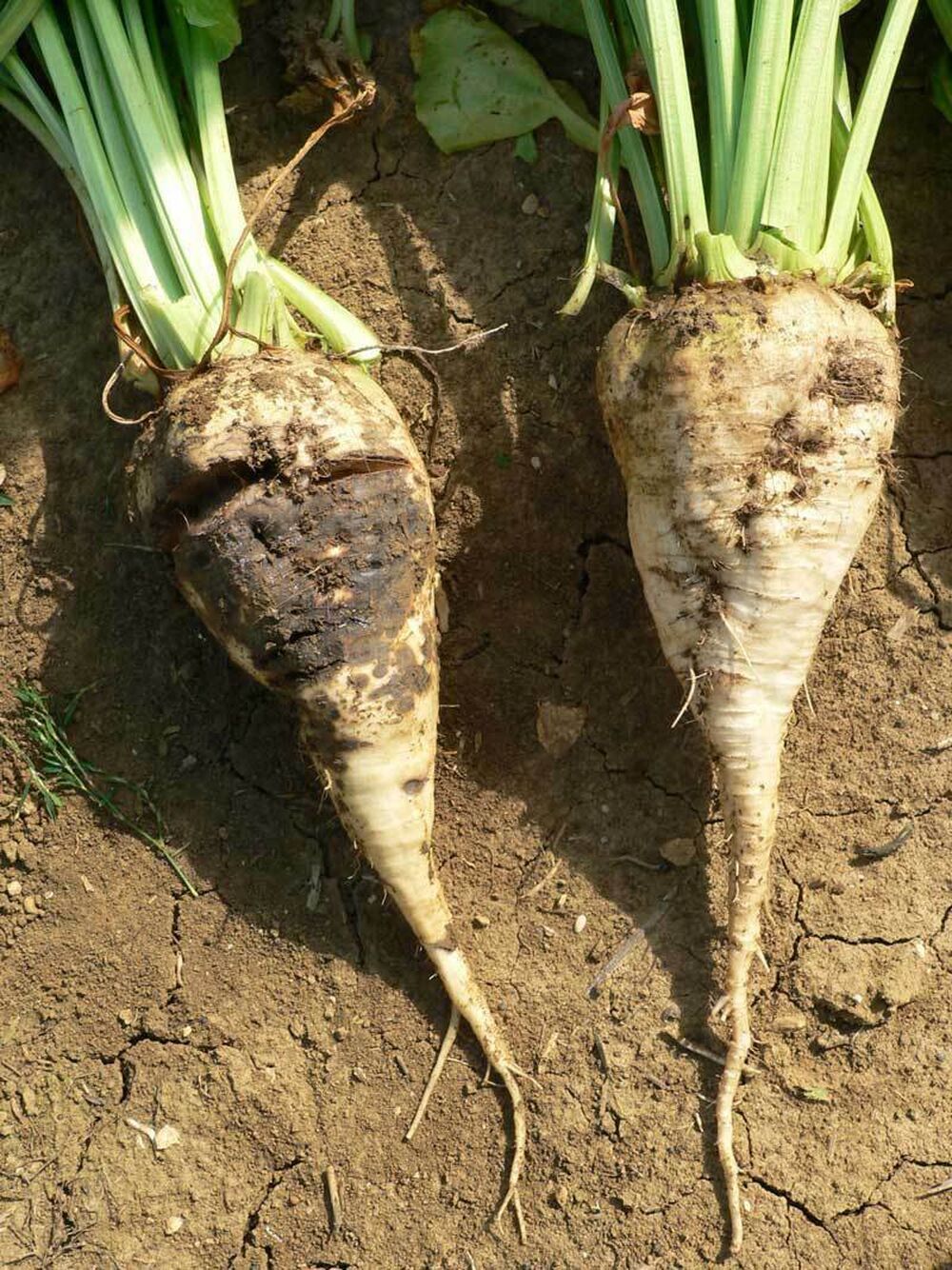Rhizoctonia root rot is caused by the soil-borne fungus Rhizoctonia solani. In sugar beet, this disease results in a dark brown rot that spreads from the root up to the crown of the plant.

What are the symptoms of rhizoctonia in sugar beets?
The disease typically becomes visible in late summer or early autumn.
- Foliage symptoms of rhizoctonia in sugar beet:
- Damage appears as small patches on the sugar beet leaves, which gradually expands and the leaves begin to wilt.
- The wilted brown leaves remain attached to the sugar beet crown and form a brown rosette, on which new leaves appear.
- Root symptoms of rhizoctonia in sugar beet:
- A brown or black dry rot can be observed on the surface and/or inside of the root and crown.
In severely infested fields, the disease can lead to significant economic losses: strongly reduced yield, lower sugar content, increased soil tare, poor processing quality, and difficulties in storage.
How is rhizoctonia spread?
In the field, the development of the soil fungus which causes rhizoctonia root rot in sugar beet, is favoured by the presence of host plants (such as maize, vegetables, ryegrass and some adventitious plants), abundant rainfall and warm spring and summer temperatures. Poor soil structure also promotes its spread.
The disease is found worldwide and occurs in all types of soil. In Europe, the fungus is present in certain well-defined areas in most sugar beet growing regions.

How can Rhizoctonia root rot be controlled?
Currently, no fungicide is approved in Europe that provides effective control against Rhizoctonia root rot. If a high risk of infestation is anticipated for the following season, growers are advised to manage the disease through the following strategies:
1. Adopt appropriate agronomic measures
- Extend crop rotation: ideally, leave a gap of 3 to 5 years between two successive beet crops in the same field.
- Avoid planting crops that host the fungus, and ensure thorough weeding.
- Maintain good soil structure by avoiding soil compaction
- Do not store diseased sugar beet
2. Use tolerant sugar beet varieties
- Select sugar beet varieties with dual tolerance to both Rhizomania and Rhizoctonia.
- SESVanderHave is a market leader in developing dual Rhizomania–Rhizoctonia tolerant varieties. The varieties currently available in France, Belgium, and the Netherlands offer a very high degree of resistance to the disease and excellent performance in terms of financial return, root yield, and sugar content.

